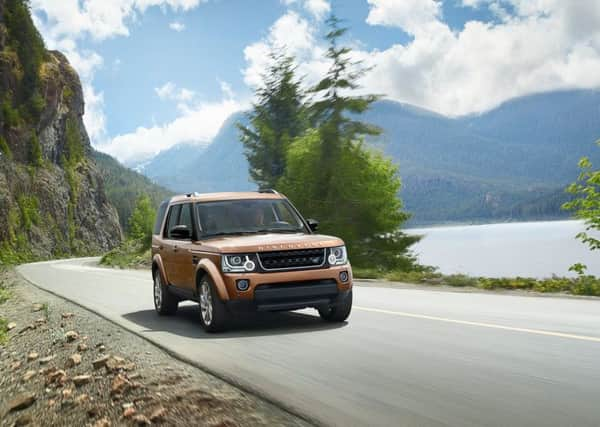Review: last steel-bodied Land Rover Discovery is a superb all-rounder


Buyers know they will like what they get. It will have the same high capacity, seven-seat interior with all the ground clearance needed to be a proper all-roader. It will lose the almost stark, functional, practical boxy shape and become a larger version of the Discovery Sport, with rounding off of the corners and edges.
In its 2017 iteration it moves nearer the acclaimed visual values and affluent image of the Range Rover. First, this autumn, there is the boutiquey convertible Range Rover Evoque which Land Rover is aiming at the fashion set. Chic women and their male counterparts will just lurve it to bits. The final bit of Land Rover land to reconfigure is the Defender. The old one went out of production this year and I am told that it could be 2018 or even 2019 before Farmer Smith and Builder Bob are driving one. Oh, that’s if they can afford it and, mischief intended, want to be seen in one.
Advertisement
Hide AdAdvertisement
Hide AdThe latter judgement depends on what it looks like. You can do a web search and see what the latest predictions are. No comment from me but Land Rover is not getting much support from Defender purists, who want a modernised version of what has gone.
The snag is that Land Rover has to make something which will sell well, and that means attracting more of the soft-fleshed trendies (both sexes) who enjoy being seen roughing it in the Defender. Frankly, if you didn’t want that leftfield landowner image nor need its paramilitary tough guy guts then the vehicle was an endurance test.
The balancing act is to keep selling to the workforces of the world and reaching more of the monied set who have been happy to pay for something which was not all that easy to use and was/is a lesson in ergonomic deficiencies. And that’s just getting in.
The Discovery, au contraire, has been a superb all-rounder, the default group product that does everything you need. Off-road, on-road, no-road, rough-road, smooth-road, yarr yarr and yarr to all that.
The last refit left it with a grossly flashy face which may have appealed to someone who really had wanted a Range Rover. The rear light units have glittering facets worthy of a box of diamante brooches. The Discovery choice has now come down to two models, the Graphite at £47,505 and the Landmark. That’s the one sampled here. It costs £56,005 and no, you can’t get a proper pukka, get off my planet Range Rover for much less than £76,000 and the average is over £100,000 and the queen bee RR is £165,500.
It has been a success, combining comfort with 4x4 grunge and an image half way between a Defender and a Range Rover. It’s a 4x4 for the family.
Behind the sun visor is a pictogram drawing attention to its height, just short of two metres in Remain language or 76 good old imperial inches. That’s taller than most men and too high for some car park barriers.
I wasn’t exactly rattling around in it but the entry step-up was always evident. Happily, I never fell on my face when getting out. The overall message from a Discovery is Mr Solid: it will last.
Advertisement
Hide AdAdvertisement
Hide AdThe seat folding mechanism displays this robust character: heavy chairs which don’t just click back into place, more like they have the heft of a brick you-know-what. The tailgate opens up and down, giving both a seat and a shelter. The scalloped edge of the lower section allows you to get nearer the load bed when it’s down, and is easier to load over when it’s up. It also gives deeper rear view vision. Clever.
In the cabin there are two-tier compartments in the dashboard, a shelf above them, a (£235) coolbox between the seats. There are “controls” in abundance, which need tidying up in the next model and the navigation system is ready for a user-friendly update but it has useful features. Its routing found me a better way on roads I thought I knew. It told me I did not have enough fuel for a proposed journey, so I never got to Wick or Plymouth – where Discovery was launched to the press in 1989. They gave us a commemorative cut glass vase.
The ride can be choppy and there can be some wheel shudder hitting road faults but mostly it is a sweet and reassuring cruiser and the off-road comfort is good. In the rough you can choose the optimum traction by turning a knob. Couldn’t be simpler.
Verdict: Going, going, get one now if you fear the shock of the new.